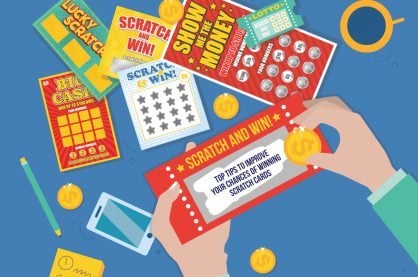The Story Behind The Iconic “Dogs Playing Poker” Painting
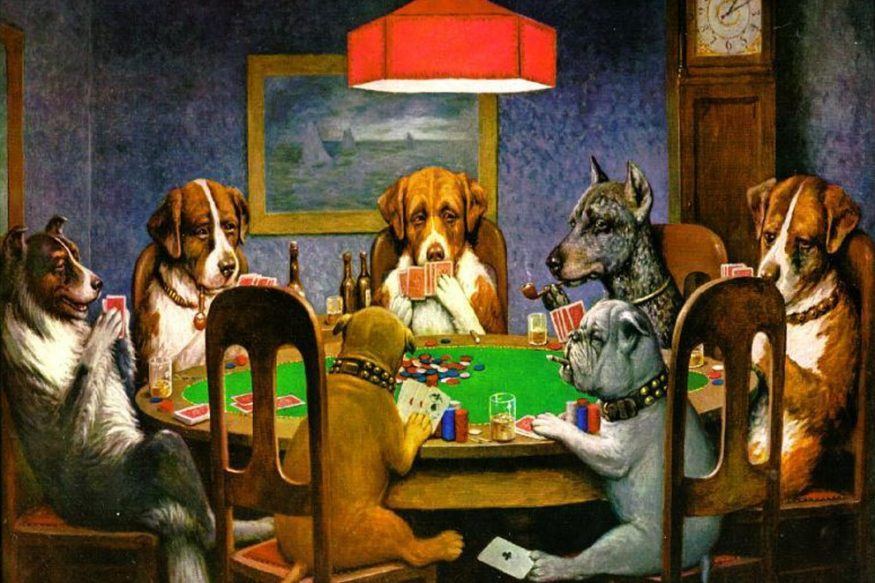
US painter Cassius Marcellus Coolidge’siconic Dogs Playing Poker is one of the most recognizable paintings in the gambling world and beyond.
But, what’s not that widely known is that Dogs Playing Poker is actually a whole series of 18 paintings that were created over almost 20 years.
This article will talk about the collection, its story and who the artist was.
The Origin and Story of “Dogs Playing Poker”
Dogs Playing Poker by Cassius Marcellus Coolidge feature comical, human-like dogs in various settings, although only 11 of the paintings show them playing poker.
16 of the paintings were commissioned by Brown & Bigelow to advertise cigars and they were not considered “art” at the time
The first painting in the collection, Poker Game, dates back as far as 1984 and is his most famous painting. It’s synonymous with the term Dogs Playing Poker, along with another painting in the Brown & Bigelow series, called A Friend in Need.
So, let’s go through the artwork in a bit more in-depth to cover each of the 16 paintings in the Brown & Bigelow series:
A Bachelor’s Dog
A dog reclining in a comfy chair, smoking a cigar, with a beer, stack of mail and newspaper.
A Bold Bluff
A St. Bernard boldly bluffing with a weak hand while all of the other dogs look with intrigue, waiting for the showdown.
Breach of Promise Suit
A court case over one dog’s breach of promise to marry.
A Friend in Need
Arguably the most famous painting in the collection, it shows a group of dogs playing poker, smoking and drinking, while one dog tries to slip an ace to his friend under the table.
His Station and Four Aces
A train conductor passing by while well-dressed passengers are preoccupied playing a game of high-stakes poker.
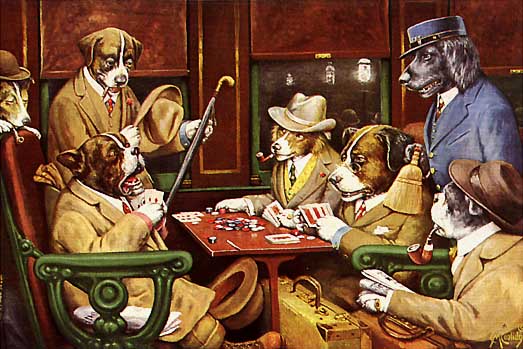
New Year’s Eve in Dogville
A New Year’s celebration party where all of the dogs are dancing.
One to Tie Two to Win
A stadium full of dogs rooting for other dogs playing baseball.
Pinched with Four Aces
Dogs playing poker in a dimly-lit room while police dogs bust in to break up the game.
Poker Sympathy
A poker game where one dog slips from his chair, spilling his drink, losing his cards and chips, while all of the other dogs laugh.
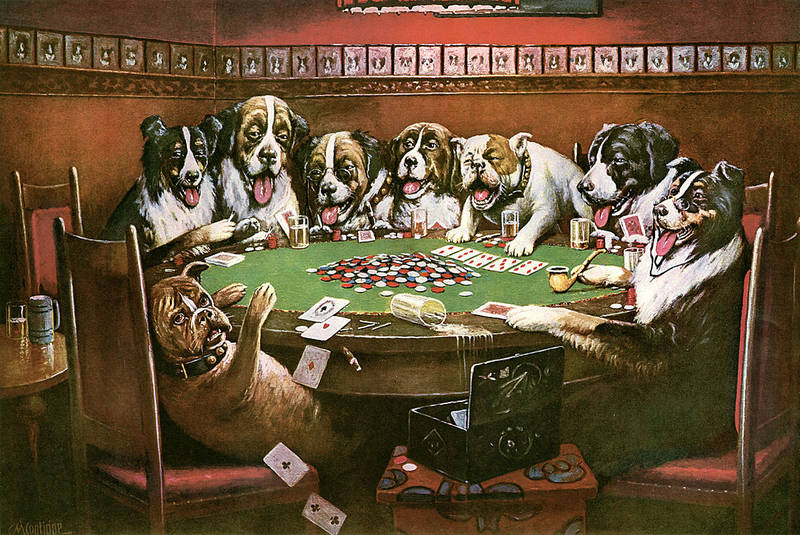
Post Mortem
Three dogs enjoying a game of poker with drinks and snacks.
The Reunion
Four Rough Collies smoking and drinking in a bar.
Riding the Goat
A jesterdog performing an act to a royal dog couple of a blindfolded dog riding a goat.
Sitting up with a Sick Friend
A male dogs’ meeting is broken up by a group of female dogs, who know no one is really sick.
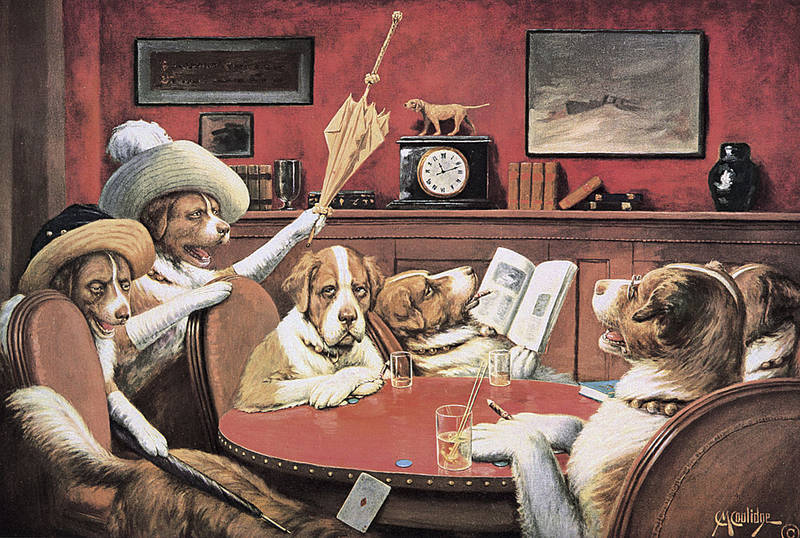
Stranger in Camp
Three dogs playing poker by a campfire, with one of them getting a bad beat.
Ten Miles to a Garage
A group of dogs stuck on the road because their car broke down.
A Waterloo
A bluffing dog wins the pot while the other dogs at the poker table look in shock.
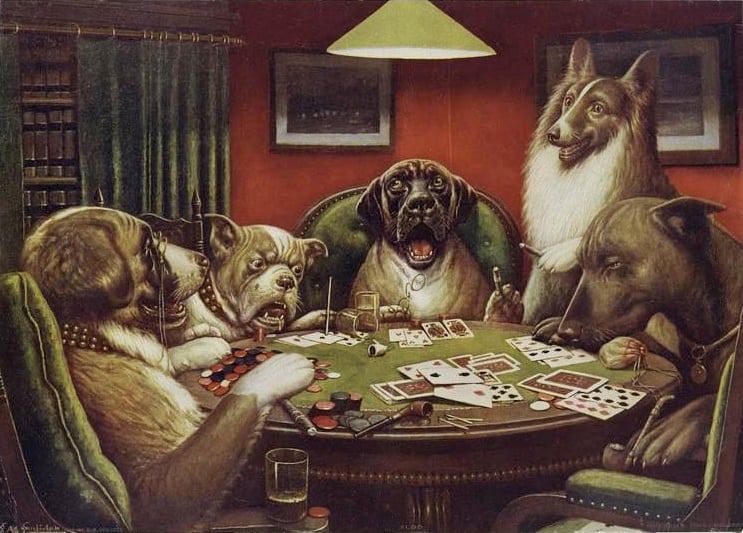
The Dogs In Popular Culture
Over the last century, Dogs Playing Poker has become more popular than anyone could have predicted, even Coolidge himself.
This painting has become a big part of pop culture in the US and can be found in countless shows and movies.
From kids’ shows like Courage the Cowardly Dog to adult animated shows like The Simpsons and Family Guy and sitcoms like Cheers and Roseanne, this painting has been well represented over the years.
It even found its way into one of Snoop Dogg’s songs.
These paintings have also become common motifs for various home decor pieces, shirts, and other merchandise.
So, Who Was Cassius Marcellus Coolidge?
Cassius Marcellus Coolidge was born in the small town of Antwerp, New York, in 1844.
He spent his first two decades growing up on a family farm before leaving to start his career, originally starting out as a sign painter and hopped between various careers.
In the early 1870s, he founded a bank and a newspaper but didn’t see much success in either venture.
A few years later, Coolidge moved from Antwerp to Rochester, where he started painting. Interestingly, he never received any extensive formal training.
He found the most success by painting dogs in various human situations.
Up until he died in 1934, Coolidge was a very active painter, drawing caricatures and other paintings. When signing, he often used the nickname “Cash” or “Kash” given by his family members.
Historians also credit Coolidge for developing the so-called “comic foregrounds” or “carnival cutouts” – those cardboard cutouts you stick your head through for a funny photo. It was his main source of income too.
How Much Is Dogs Playing Poker Worth?
Prior to the last two decades, Coolidge paintings never sold for any astronomical amounts. As his work is mostly considered kitsch, it never reached great popularity among art collectors.
Unfortunately, Coolidge’s work was most often met with ridicule and condescension by people in the art world. He was never as widely recognized as other famous painters of his era or before, mainly because his work was too trivial and funny.
In recent years, an art historian named William Hennessey publicly mocked Coolidge’s work.
On April 1, 2002, he announced that his museum was trying to acquire Coolidge’s work to add to its collection. A tasteless joke, but Hennessey later said that he also appreciates and has always liked Coolidge’s work.
Knowing this, his most famous painting, Poker Game, is also his most expensive one.
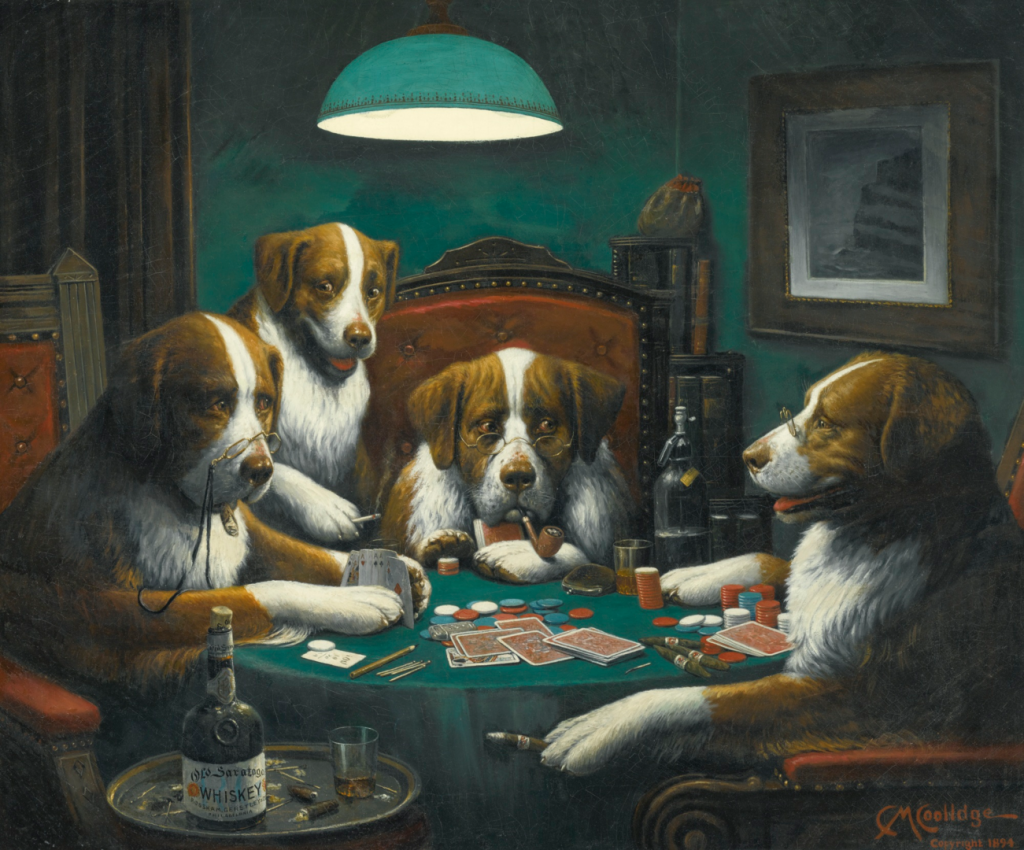
It was sold in 2015 for $658,000.
This painting is followed A Bold Bluff and Waterloo, which sold as a pair for just over $590,000.
Interestingly enough, A Friend in Need is valued as Coolidge’s most expensive painting.
However, even though this painting is thought to be worth at least several million dollars, it has never been up for sale.
Where Can You Buy Prints Of Dogs Playing Poker?
While the original painting is certainly out of most people’s budget, copies of Dogs Playing Poker are widely available.
You can easily find top-quality printed copies on sites like Amazon and Etsy.
If you want to go a step further and purchase a real hand-painted replica of any painting in this series, you can also find them at a number of online gallery stores.
Of course, these also cost substantially more than the printed copies. But, if you’re going for a museum-quality piece you can proudly hang in your room, they are well worth the money.
